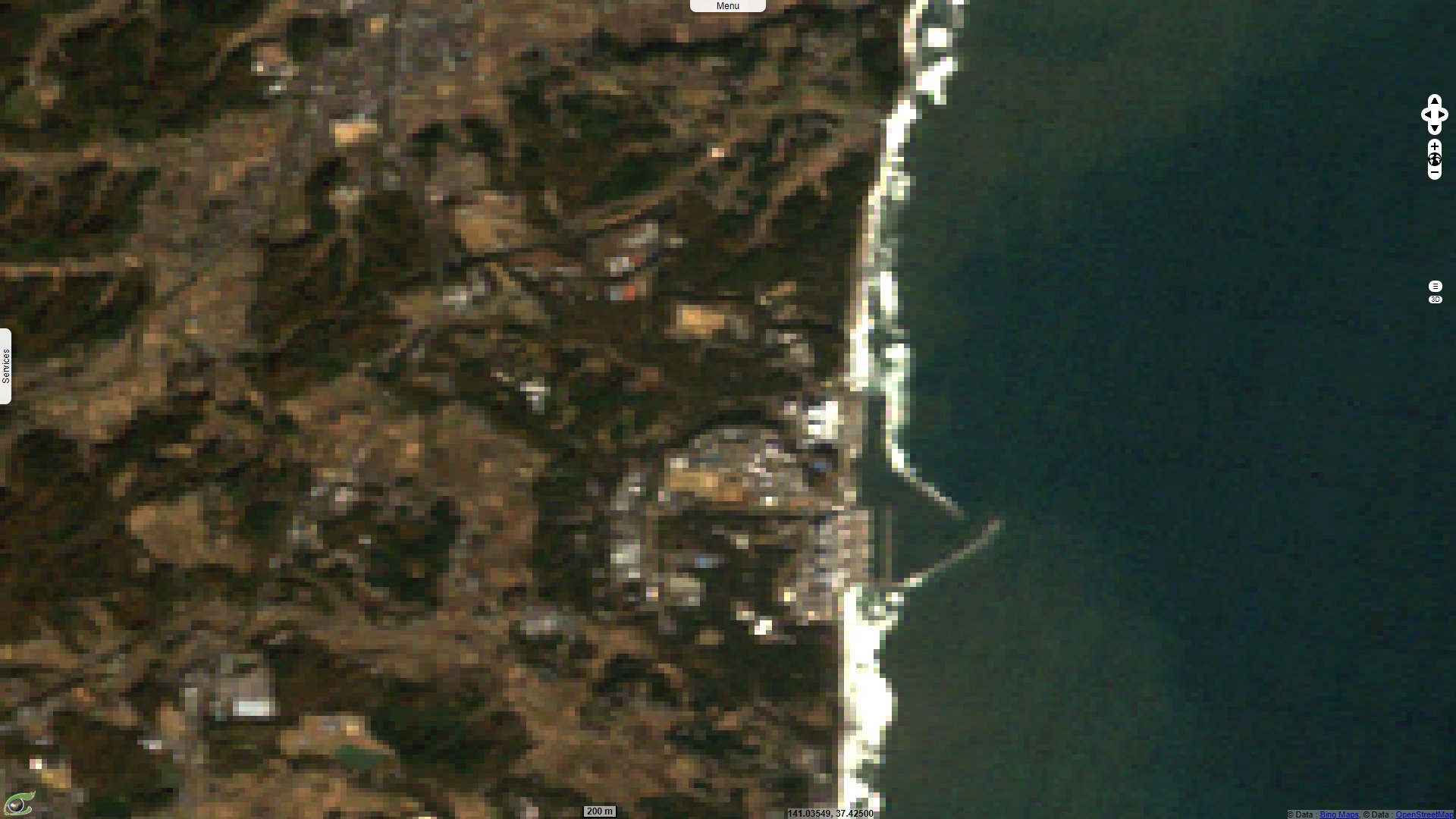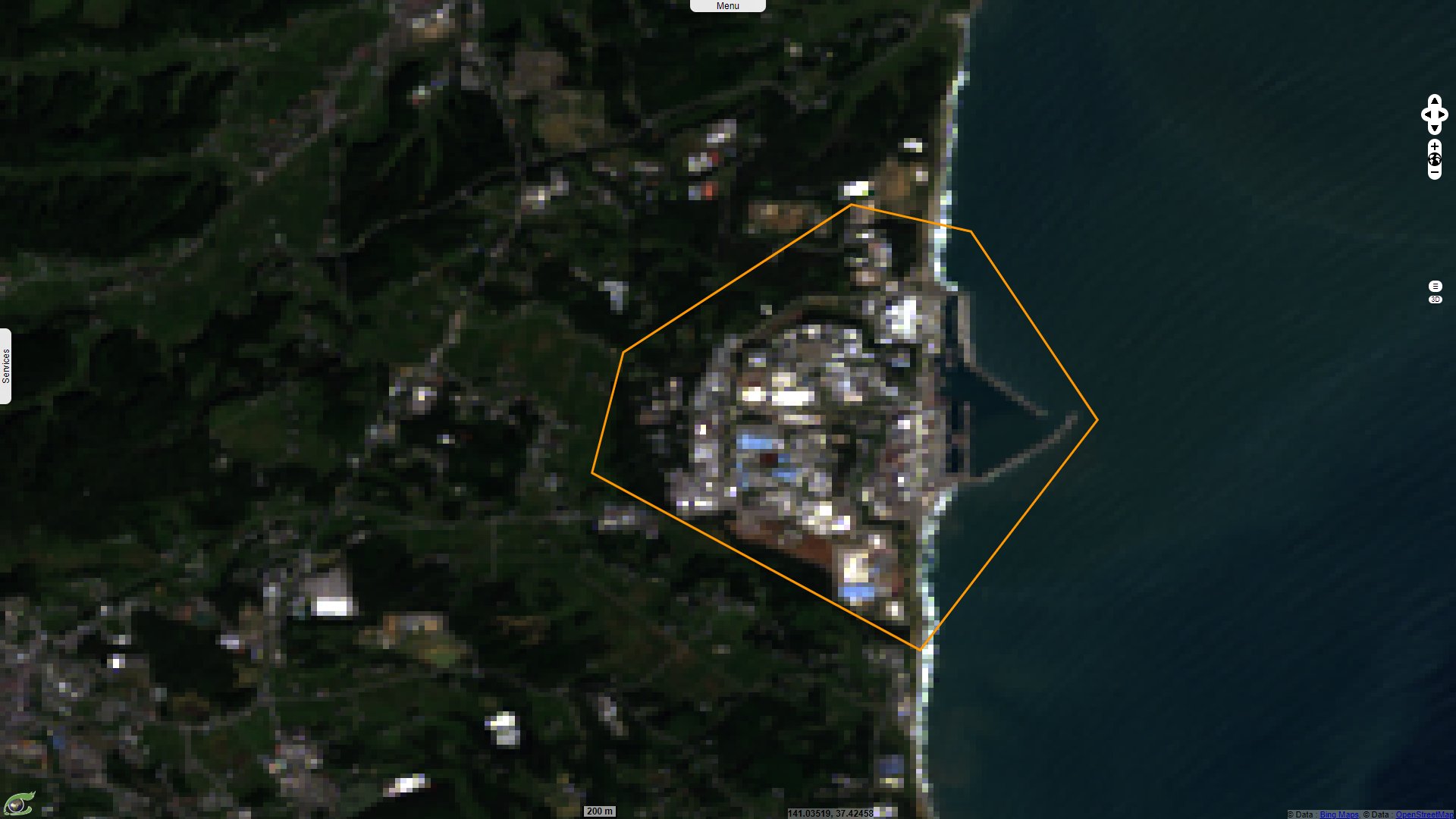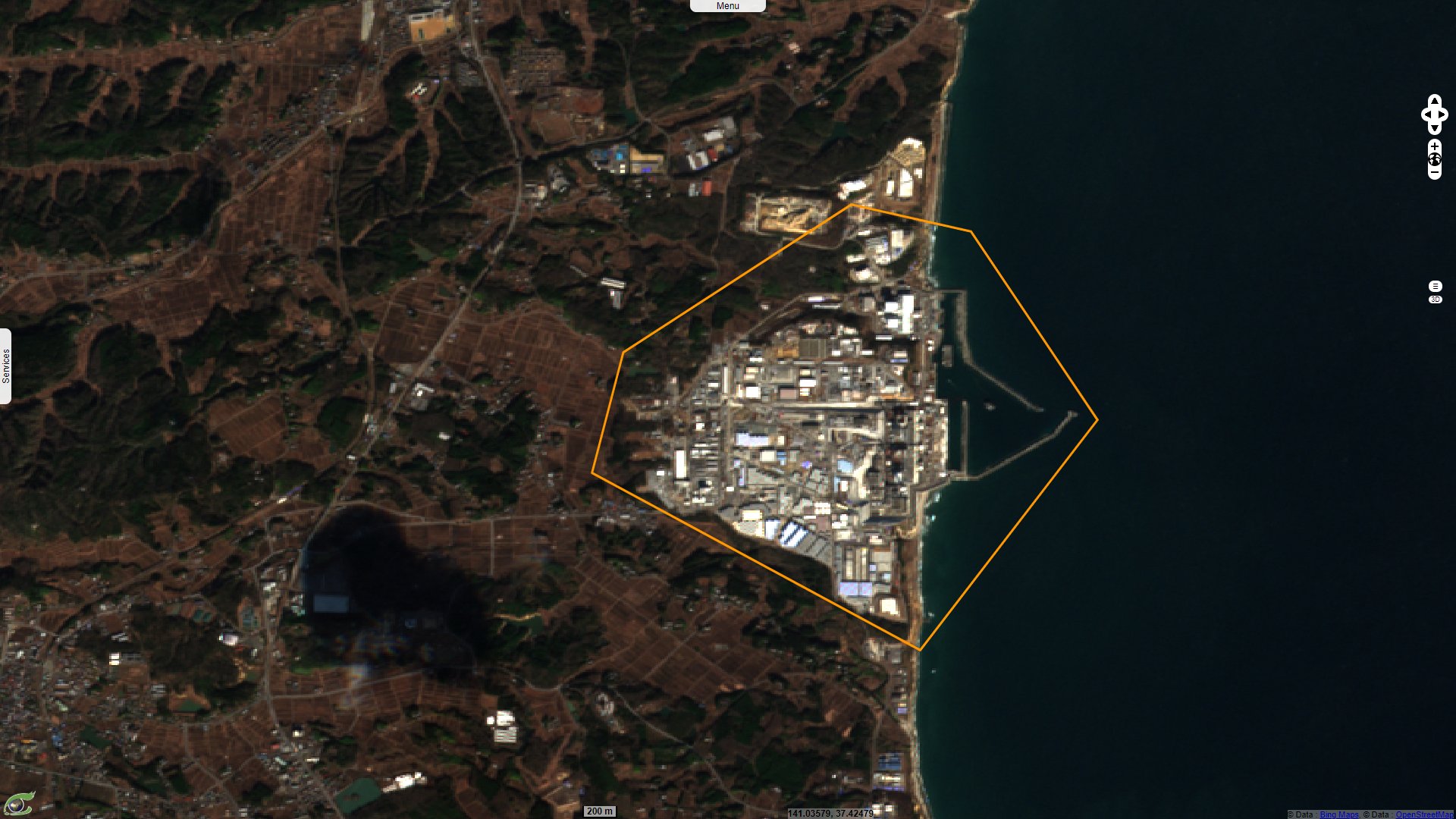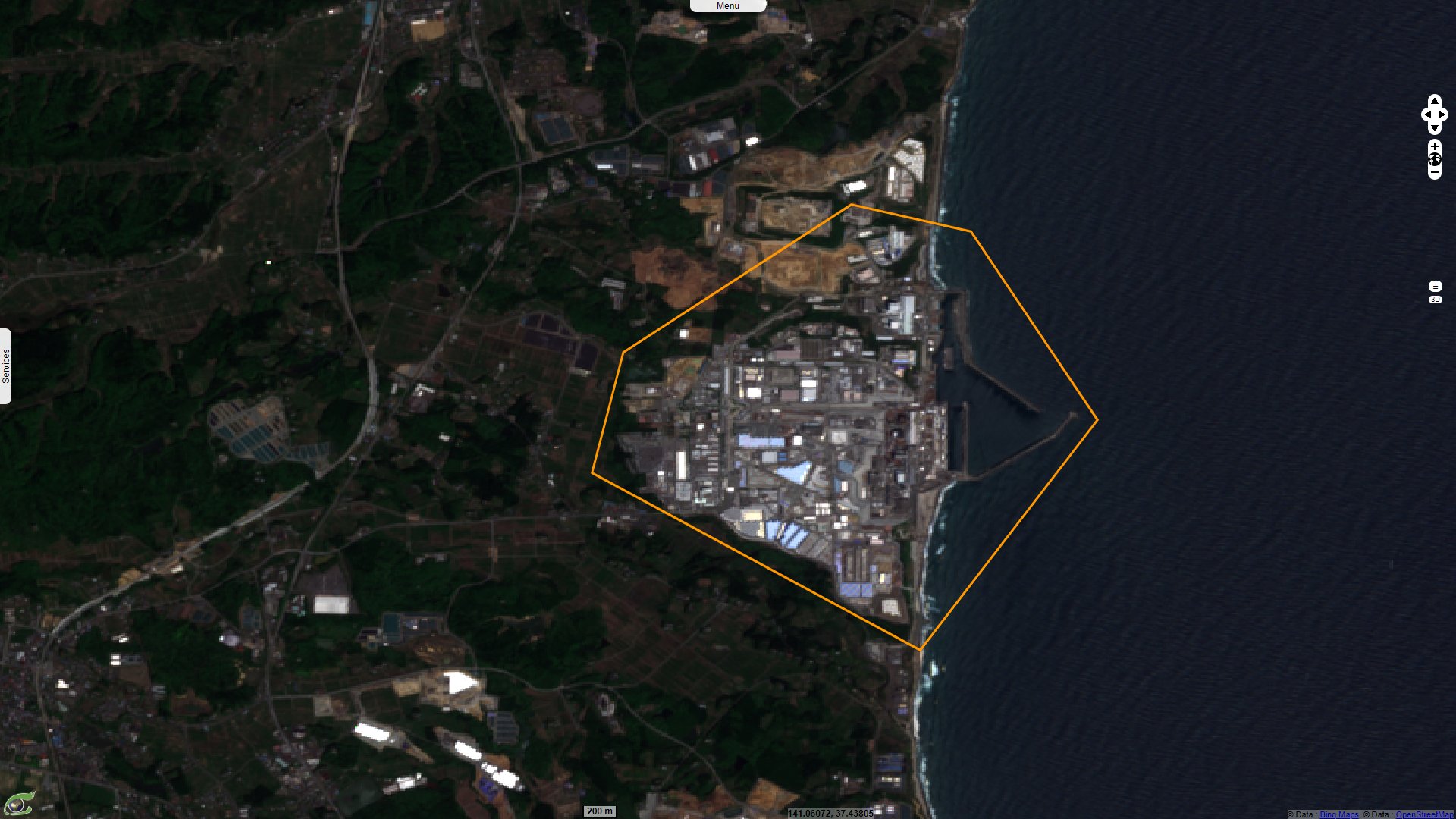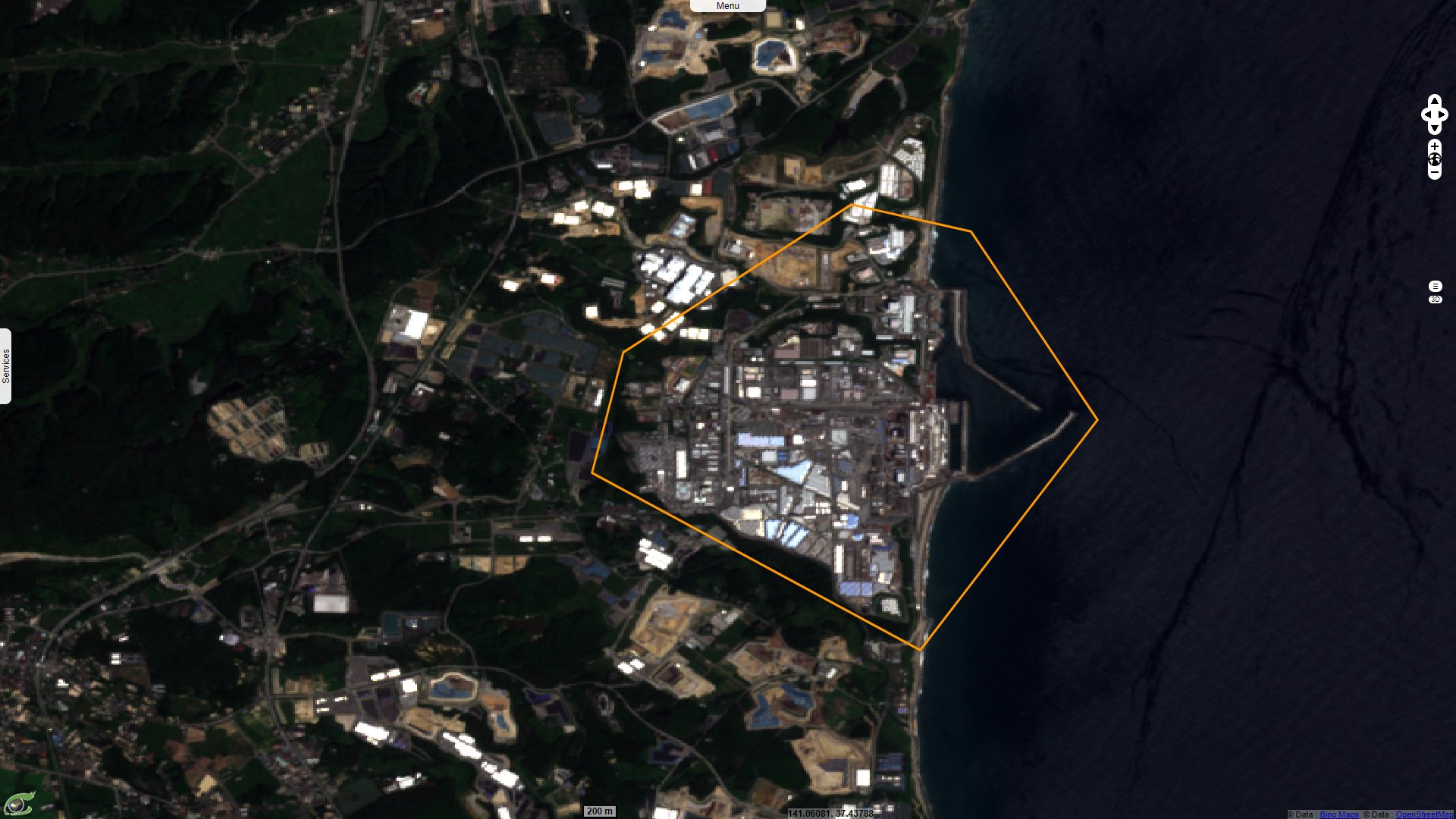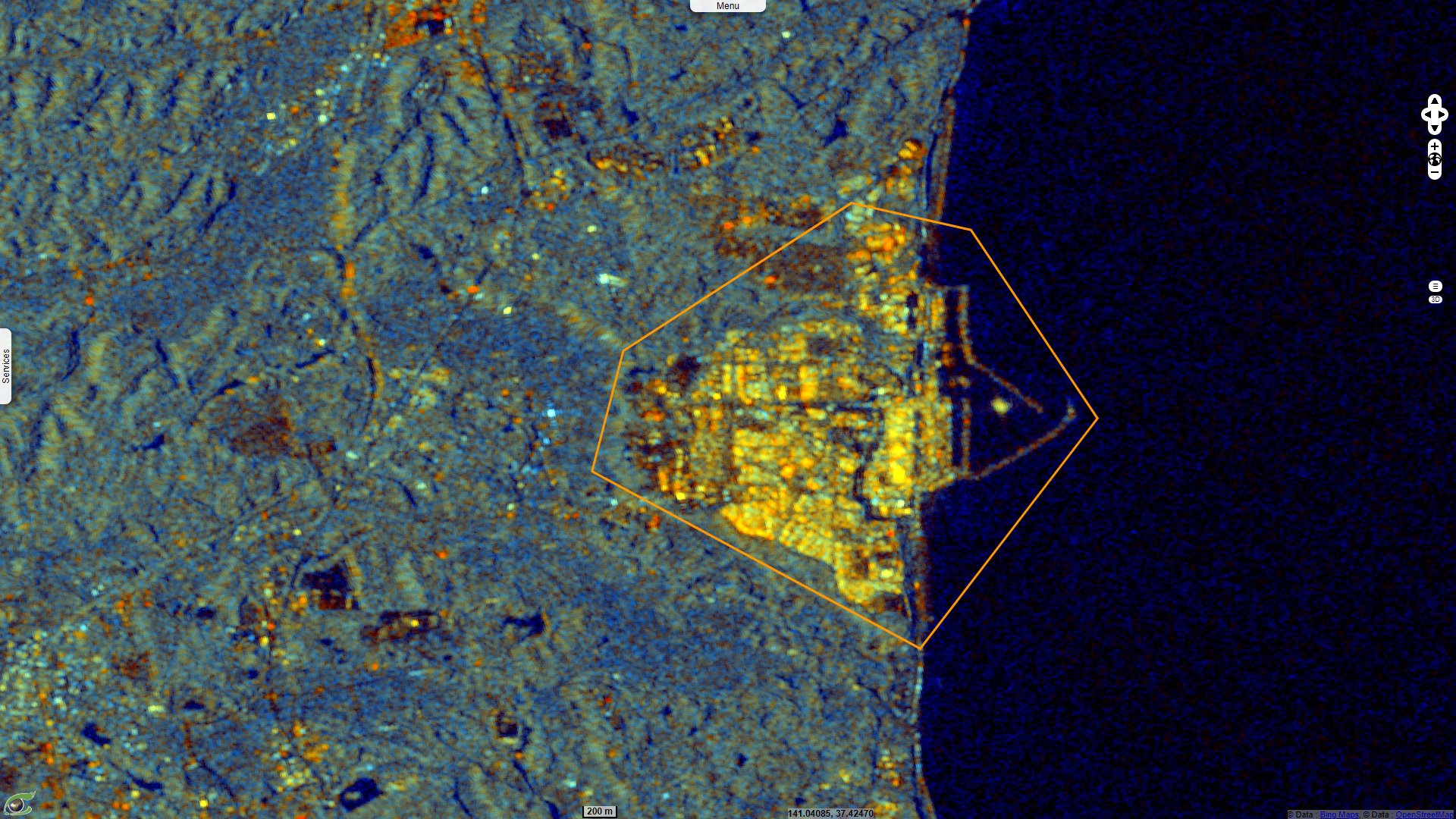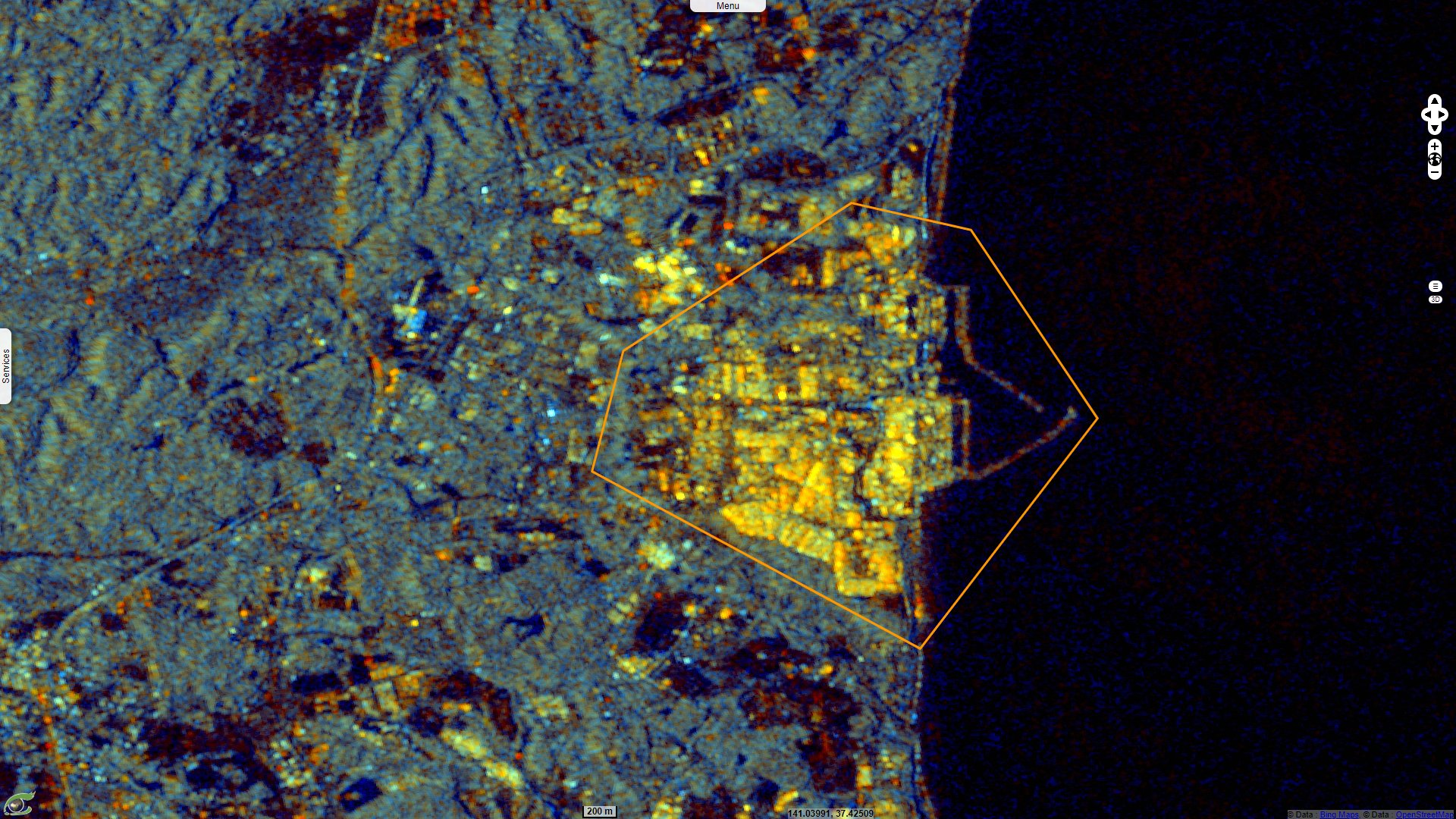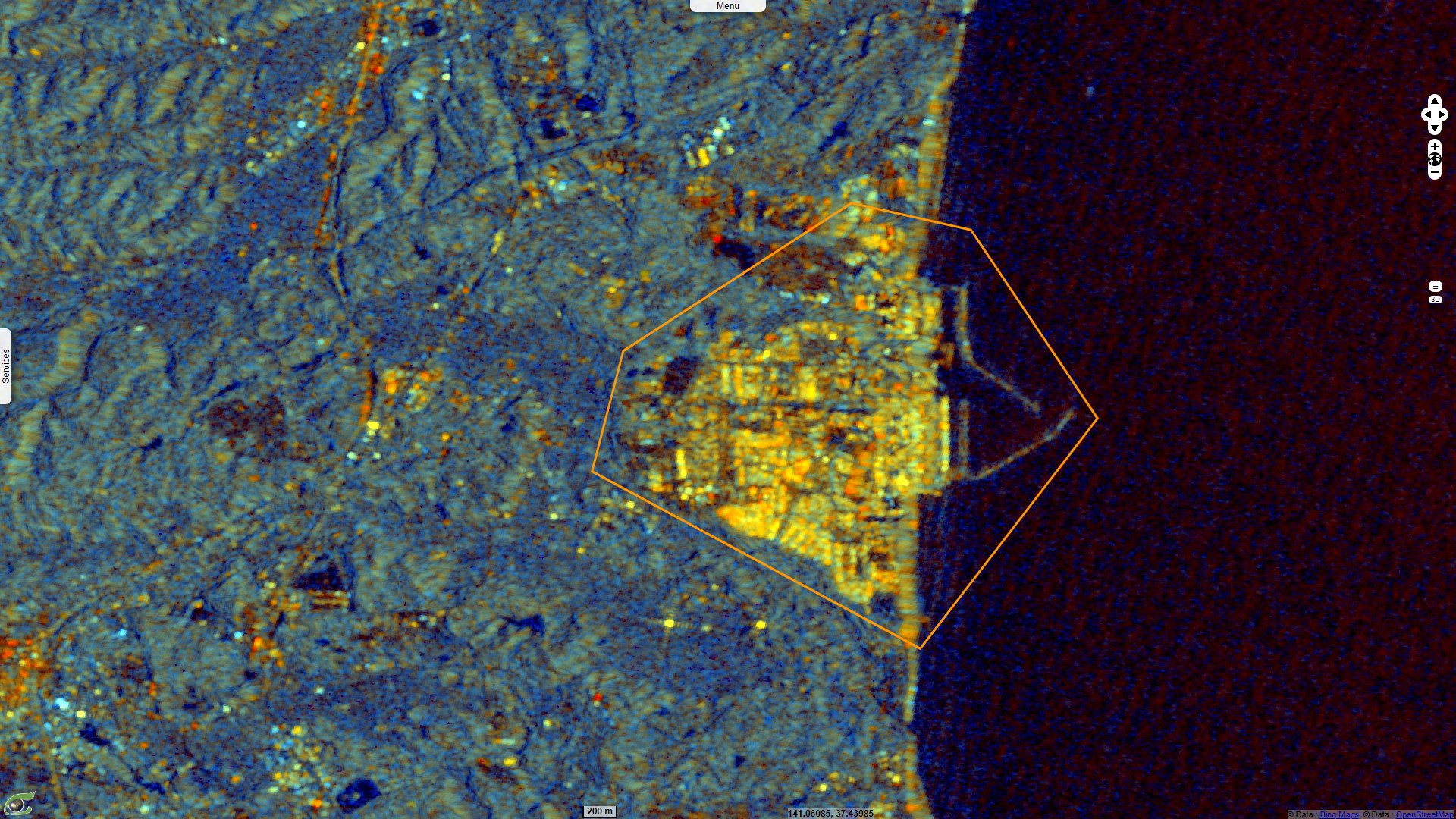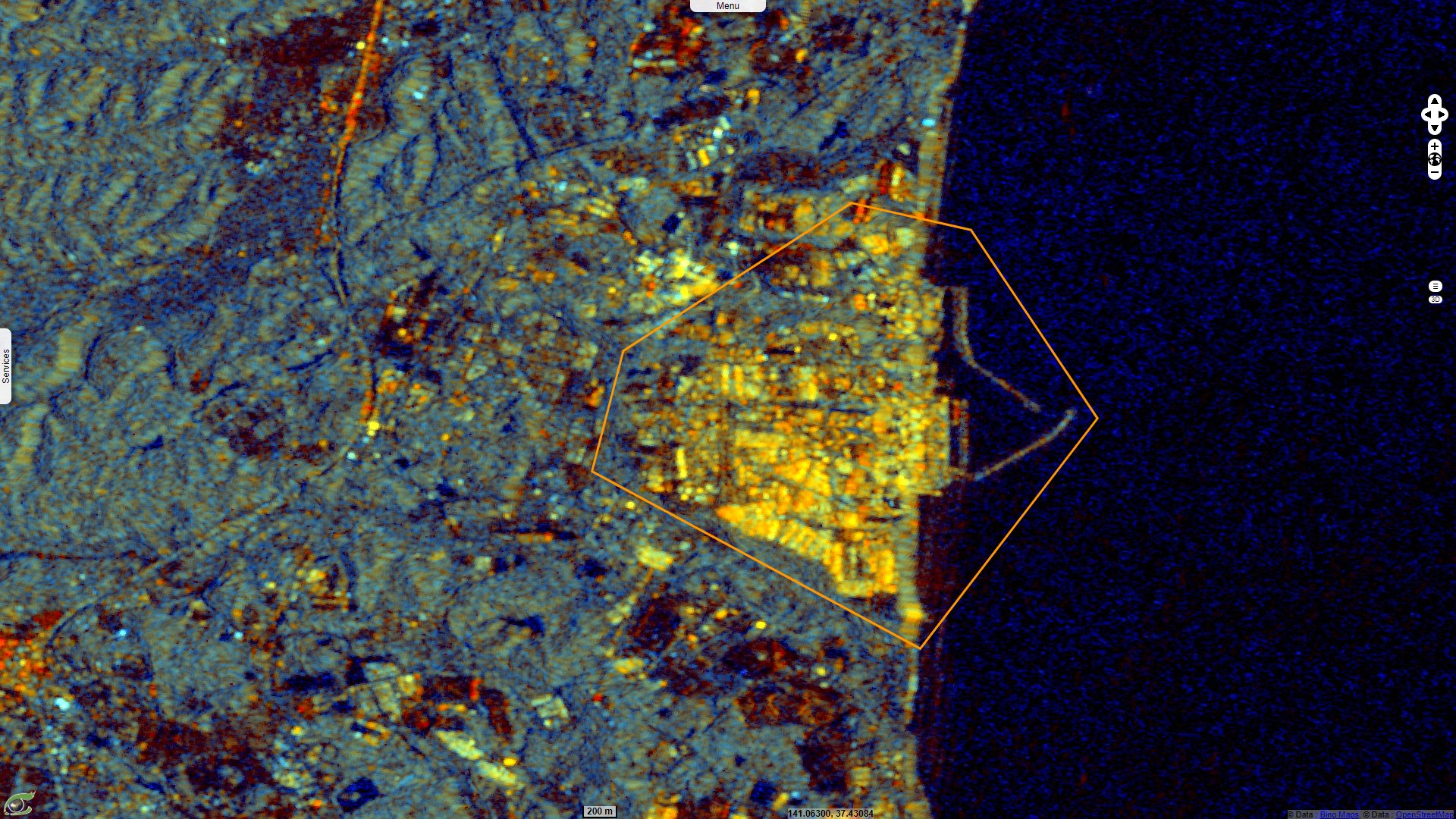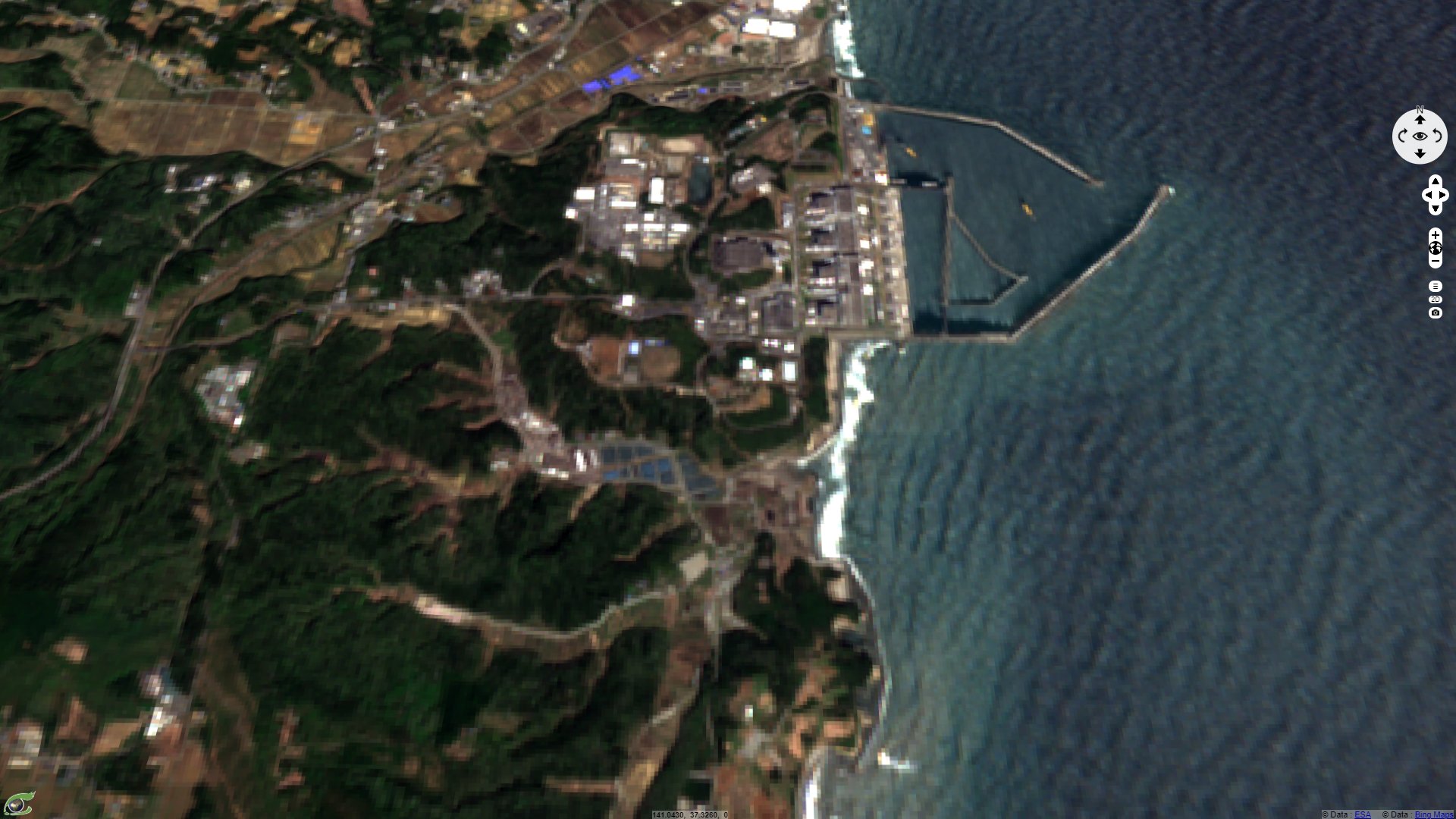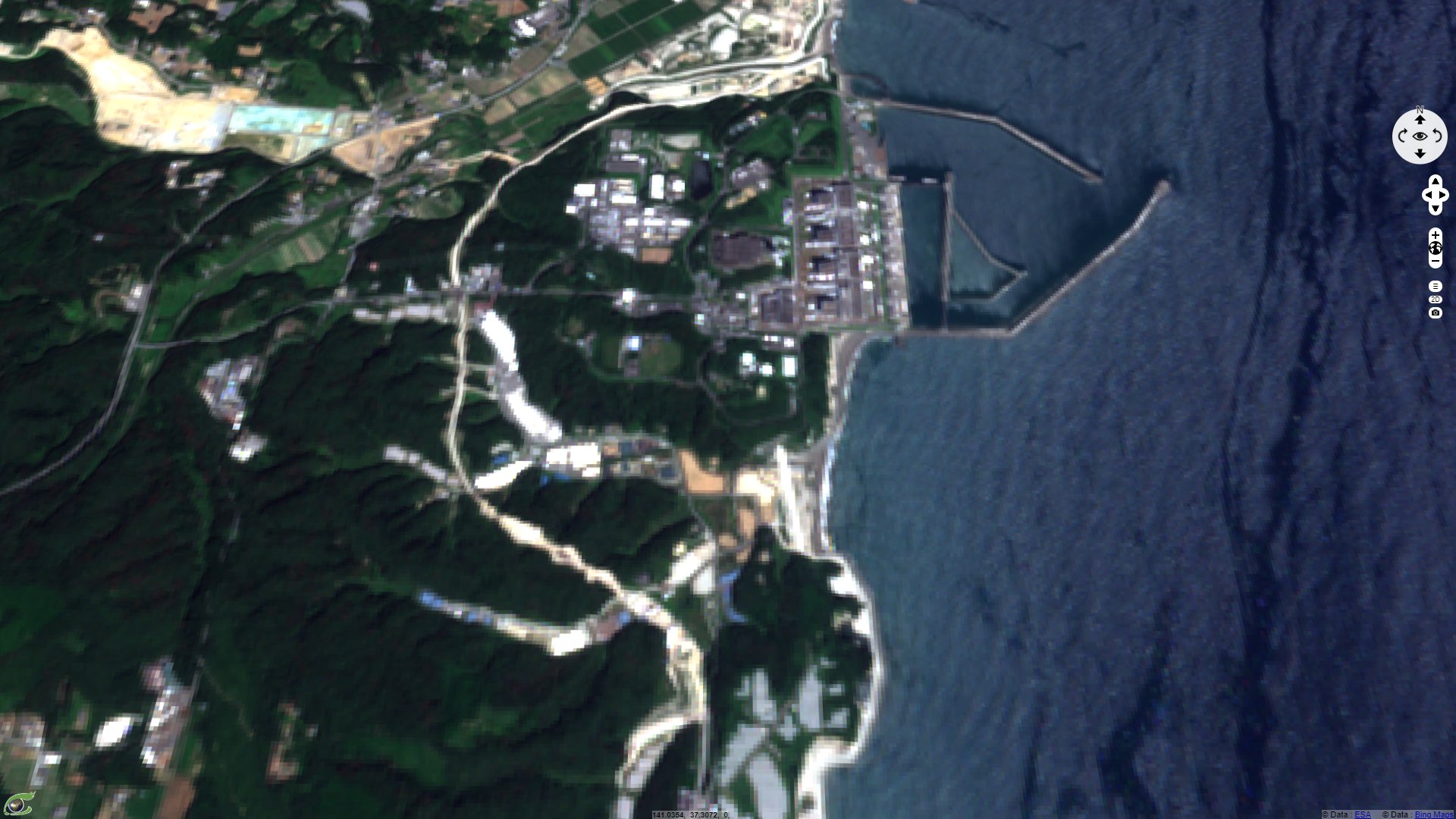Fukushima nuclear disaster, 10 years after, Japan
Sentinel-1 CSAR IW acquired on 15 November 2016
Sentinel-2 MSI acquired on 11 January 2016
...
Sentinel-2 MSI acquired on 20 October 2000
Sentinel-1 CSAR IW acquired on 06 March 2021
Keyword(s): Land, pollution, environment, water quality, health, energy, Japan.

A massive number of tanks storing treated water at the Fukushima No. 1 plant are seen in February - Source: The Japan Times.
The Fukushima Daiichi nuclear disaster was the most severe nuclear accident since the Chernobyl disaster in 1986, it was classified as Level 7 on the International Nuclear Event Scale (INES). It happened on 11 March 2011 at the Fukushima Daiichi Nuclear Power Plant in Ōkuma, Fukushima Prefecture, Japan. The event was caused by the 2011 Tōhoku earthquake and tsunami, the most powerful earthquake ever recorded in Japan, and the fourth most powerful earthquake in the world since modern record-keeping began in 1900.
Since the accident, groundwater is contaminated by nucleides which requires to store this water in tanks until their radioactivity level decreases. Justin McCurry, reporter of the Guardian in Tokyo wrote on 10 September 2019: "More than 1 million tonnes of contaminated water has accumulated at the plant since it was struck by a tsunami in March 2011, triggering a triple meltdown that forced the evacuation of tens of thousands of residents."
"Tokyo Electric Power (Tepco) has struggled to deal with the buildup of groundwater, which becomes contaminated when it mixes with water used to prevent the three damaged reactor cores from melting."
An article written by Kazuaki Nagata and published in the Japan Times on Aug 9, 2019 adds: "Tokyo Electric Power Company Holdings Inc. on Friday projected that the storage tanks for the treated contaminated water at its Fukushima No. 1 nuclear plant would reach full capacity in three years despite plans to expand storage space, complicating the government’s efforts to tackle the build-up."
"Despite the dwindling storage space, a government committee tasked with deciding what to do with the treated water build-up said at a meeting it would consider sticking with holding the water at the facility for the foreseeable future due to strong objections from residents to discharging it into the sea."
"Tepco projected that storage would reach full capacity by around summer 2022 even after the expansion — the first time it has issued such a precise estimate."
"According to Tepco, the Fukushima No. 1 plant had 960 massive tanks containing 1.15 million tons of treated water as of July 18. Water that has touched the highly radioactive melted fuel debris has been cleaned up through water treatment machines and is stored in the tanks, but the high-tech treatment machines are able to remove most radionuclides except tritium. The plant currently sees an increase of contaminated water by 170 tons a day, Tepco says."
"The operator of the ruined Fukushima Daiichi nuclear power plant will have to dump huge quantities of contaminated water from the site directly into the Pacific Ocean, Japan’s environment minister has said – a move that would enrage local fishermen." "Coastal nuclear plants commonly dump water that contains tritium into the ocean. It occurs in minute amounts in nature." concludes Justin McCurry.
Tokyo Electric Power Company disclosed on the 25th that after the Fukushima magnitude 7.3 earthquake on February 13, more than 50 nuclear sewage storage tanks at the Fukushima Daiichi Nuclear Power Plant had been displaced, but they had not a leak was found.
